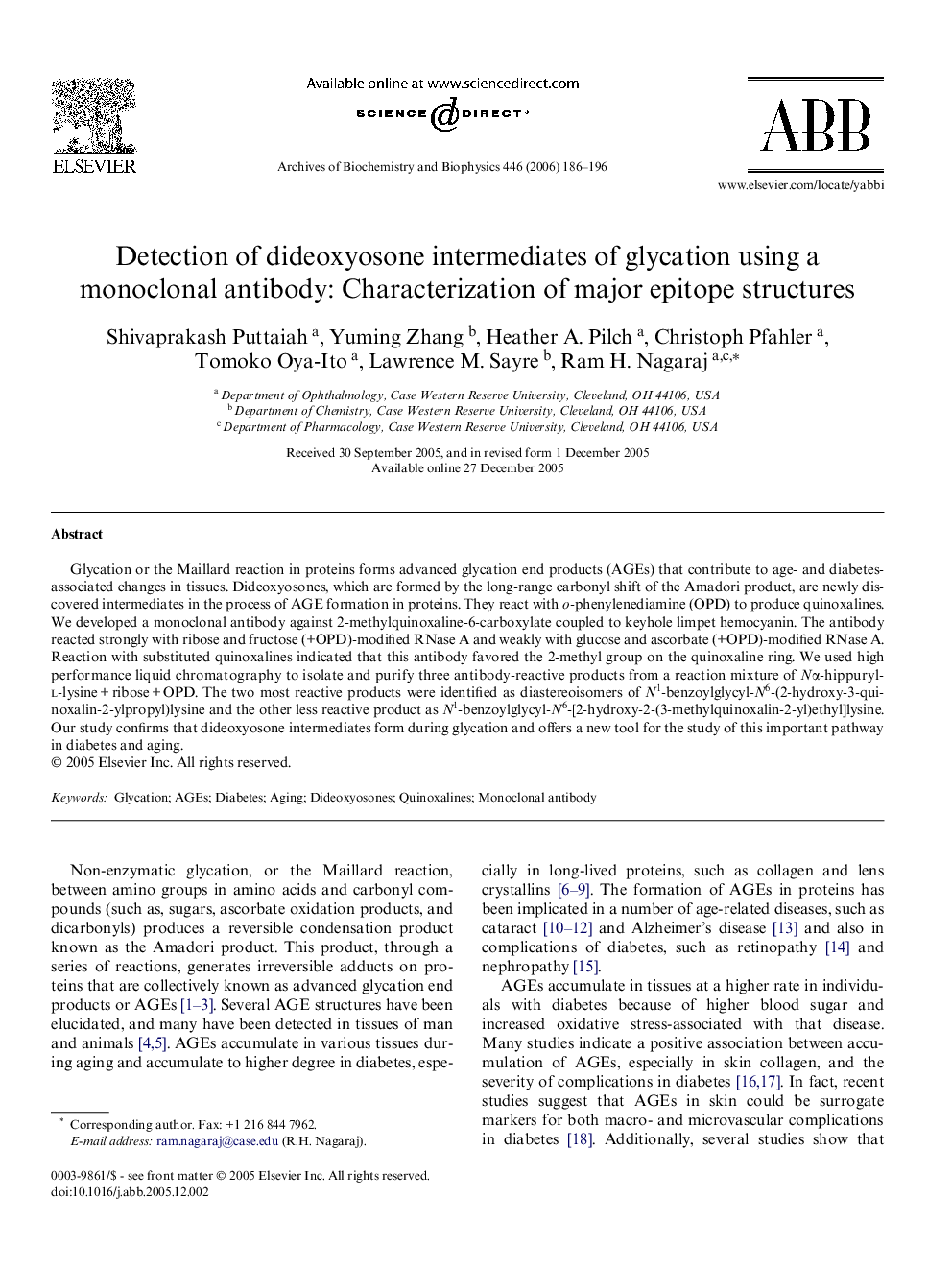| کد مقاله | کد نشریه | سال انتشار | مقاله انگلیسی | نسخه تمام متن |
|---|---|---|---|---|
| 1927618 | 1536531 | 2006 | 11 صفحه PDF | دانلود رایگان |

Glycation or the Maillard reaction in proteins forms advanced glycation end products (AGEs) that contribute to age- and diabetes-associated changes in tissues. Dideoxyosones, which are formed by the long-range carbonyl shift of the Amadori product, are newly discovered intermediates in the process of AGE formation in proteins. They react with o-phenylenediamine (OPD) to produce quinoxalines. We developed a monoclonal antibody against 2-methylquinoxaline-6-carboxylate coupled to keyhole limpet hemocyanin. The antibody reacted strongly with ribose and fructose (+OPD)-modified RNase A and weakly with glucose and ascorbate (+OPD)-modified RNase A. Reaction with substituted quinoxalines indicated that this antibody favored the 2-methyl group on the quinoxaline ring. We used high performance liquid chromatography to isolate and purify three antibody-reactive products from a reaction mixture of Nα-hippuryl-l-lysine + ribose + OPD. The two most reactive products were identified as diastereoisomers of N1-benzoylglycyl-N6-(2-hydroxy-3-quinoxalin-2-ylpropyl)lysine and the other less reactive product as N1-benzoylglycyl-N6-[2-hydroxy-2-(3-methylquinoxalin-2-yl)ethyl]lysine. Our study confirms that dideoxyosone intermediates form during glycation and offers a new tool for the study of this important pathway in diabetes and aging.
Journal: Archives of Biochemistry and Biophysics - Volume 446, Issue 2, 15 February 2006, Pages 186–196